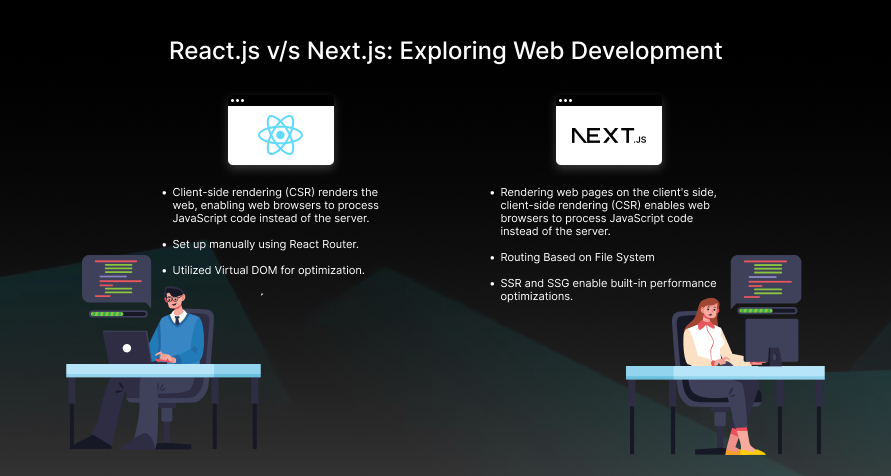What is NodeJs :
In the current digital world, selecting the right technology for web development is essential to provide a smooth user experience and scalable solutions. Among the many choices available, Node.js is a versatile platform with several advantages and challenges. For instance, it powers the backend of popular applications like Netflix, LinkedIn, and Uber. This discussion will cover a deeper understanding of Node.js, including its applications, benefits, drawbacks, and impact on decision-making in web development projects.
Understanding Node.js
Node.js utilizes an event-driven, non-blocking I/O model, enhancing the efficiency and responsiveness of concurrent connections, representing a paradigm shift in web development.
Why Node.js?
- Empowering JavaScript on the server side: By using JavaScript with Node.js across the entire stack, developers can simplify the development process and enhance code reusability.
- Performance and Scalability: Node.js is ideal for real-time applications and scalable scenarios due to its asynchronous nature, single-threaded architecture, and optimal performance.
- Extensive Ecosystem: Developers can use npm’s vast code library to build Node.js applications faster. The ecosystem includes various tools and resources that encourage innovation and collaboration.
- Cross-Platform Compatibility: Node.js enables applications to run seamlessly on various operating systems, supporting cross-platform development and enhancing accessibility.
Merits and Demerits of NodeJS.
Merits :
- Ease of Learning: Node.js is easy for newcomers due to its familiarity with JavaScript developers and extensive documentation.
- Scalability: Thanks to its non-blocking I/O model, Node.js efficiently handles thousands of concurrent connections, ensuring optimal performance even under heavy loads.
- Speed: The event-driven architecture of Node.js enables fast task execution and reduces response times.
- Cross-Platform Compatibility: Node.js can operate on multiple platforms, making deployment more manageable and ensuring consistent performance across different environments.
- Unified Development: Developers can reduce development time and enhance maintainability using JavaScript for both client and server sides.
Demerits :
- CPU-Bound Tasks: Node.js’s single-threaded nature may cause performance bottlenecks for CPU-bound tasks.
- Package Management: While npm provides a diverse range of packages, it’s important to note that Node.js lacks a centralized library. This means that developers must be cautious about managing dependencies, ensuring they are up-to-date and compatible with the project. However, proper planning and understanding of the ecosystem can effectively manage these challenges.
- Asynchronous Programming Model: While asynchronous programming brings the benefits of concurrency and responsiveness, it’s important to note that it can introduce complexity and make code maintenance more challenging, especially in larger codebases. Knowing this challenge can help you prepare and manage your projects effectively.
- Skill Gap: Finding experienced Node.js developers can be challenging and time-consuming due to high demand and limited supply. To bridge this gap, you can provide training for existing developers or hire freelancers/agencies with Node.js expertise
Conclusion:
Node.js has revolutionized web development, ushering in a new era of speed, scalability, and versatility. At Drop Techno Lab, we’re at the forefront of this transformation, offering innovative and user-friendly solutions that can propel your business to new heights. Let’s discuss your project and embark on this exciting journey together.










